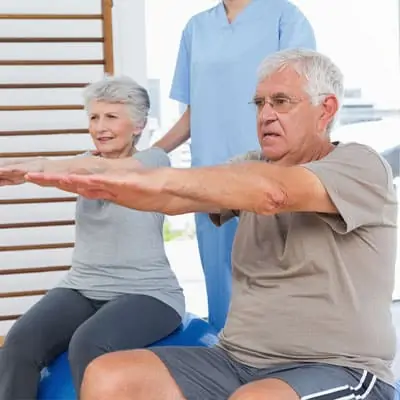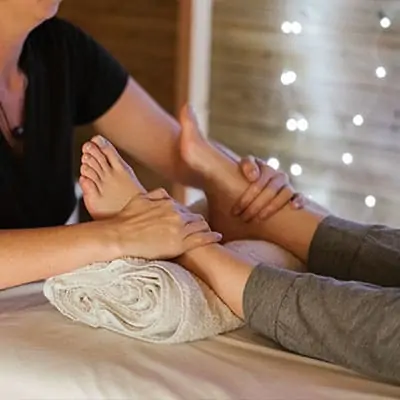Understanding Scoliosis in Children
What is Scoliosis?
Scoliosis is a condition characterized by an abnormal lateral curvature of the spine. It often appears during the growth spurt just before puberty. The curve can take the shape of an “S” or a “C” and can vary in severity. Mild scoliosis may not cause any noticeable symptoms, while more severe cases can lead to discomfort and physical deformities.
Scoliosis is typically identified through physical examinations and imaging tests such as X-rays. For more information on how scoliosis is diagnosed, visit our article on scoliosis diagnosis.
Causes and Risk Factors in Children
The exact cause of scoliosis in children is often unknown, making it a condition that can be challenging to predict or prevent. However, there are several known risk factors and potential causes that can contribute to the development of scoliosis in kids:
| Risk Factor | Description |
|---|---|
| Genetics | A family history of scoliosis increases the likelihood that a child will develop the condition. |
| Gender | Girls are more likely than boys to develop severe scoliosis that requires treatment. |
| Age | Scoliosis often appears during the growth spurt before puberty, typically between ages 9 and 15. |
| Neuromuscular Conditions | Conditions such as cerebral palsy or muscular dystrophy can increase the risk. |
| Congenital Factors | Some children are born with spinal abnormalities that predispose them to scoliosis. |
Understanding these risk factors can help in early detection and intervention. Regular scoliosis screenings can aid in identifying the condition at an early stage, which is crucial for effective treatment. Learn more about scoliosis screening and the importance of early detection.
For additional insights into the causes of scoliosis, you can visit our comprehensive guide on scoliosis causes.
By understanding what scoliosis is and the risk factors associated with it, you can take proactive steps in managing and treating the condition. Incorporating scoliosis exercises into your child’s routine can be beneficial in maintaining spinal health and reducing symptoms.
Importance of Exercise for Scoliosis
Exercise plays a critical role in managing scoliosis in children, offering numerous benefits and helping to maintain spinal health. Understanding these benefits and adhering to safe exercise guidelines can significantly improve the quality of life for kids with scoliosis.
Benefits of Exercise for Kids with Scoliosis
Engaging in regular exercise can provide multiple advantages for children with scoliosis. These benefits include:
- Improved Posture: Exercise can help in correcting postural imbalances by strengthening the muscles supporting the spine.
- Enhanced Flexibility: Stretching exercises can increase the flexibility of the spine, reducing stiffness and improving mobility.
- Pain Relief: Strengthening and stretching exercises can alleviate scoliosis pain by reducing muscle tension and improving spinal alignment.
- Mental Well-being: Physical activity releases endorphins, which can enhance mood and reduce stress, contributing to overall mental health.
- Better Physical Condition: Regular exercise helps in maintaining a healthy weight, which reduces the load on the spine and prevents further curvature.
| Benefit | Description |
|---|---|
| Improved Posture | Corrects postural imbalances |
| Enhanced Flexibility | Increases spinal flexibility |
| Pain Relief | Alleviates muscle tension and pain |
| Mental Well-being | Boosts mood and reduces stress |
| Better Physical Condition | Maintains healthy weight and reduces spinal load |
Guidelines for Safe Exercise
Ensuring that exercises are safe and effective for kids with scoliosis is crucial. Following these guidelines can help in achieving the best outcomes:
- Consult a Healthcare Provider: Before starting any exercise program, consult a healthcare provider or a physical therapist to tailor exercises to your child’s specific needs. Learn more about scoliosis treatment options.
- Warm-Up and Cool-Down: Always start with a warm-up to prepare the muscles and end with a cool-down to prevent injury.
- Focus on Technique: Proper form is essential to avoid additional strain on the spine. Supervise your child to ensure they perform exercises correctly.
- Use Appropriate Intensity: Choose exercises that match your child’s fitness level to prevent overexertion. Gradually increase the intensity as their strength and endurance improve.
- Incorporate Variety: Mix different types of exercises, including stretching, strengthening, and postural correction exercises, to address various aspects of scoliosis management.
- Monitor Pain Levels: If your child experiences pain during or after exercise, stop immediately and consult a healthcare provider.
For more detailed guidance on safe exercise practices, refer to our article on scoliosis physical therapy.
| Guideline | Description |
|---|---|
| Consult a Healthcare Provider | Tailor exercises to specific needs |
| Warm-Up and Cool-Down | Prepare muscles and prevent injury |
| Focus on Technique | Ensure proper form |
| Use Appropriate Intensity | Match fitness level |
| Incorporate Variety | Mix different types of exercises |
| Monitor Pain Levels | Stop if pain occurs |
By understanding the importance of exercise and following these guidelines, you can help your child manage scoliosis effectively and improve their overall well-being. For more information on scoliosis and related topics, explore our articles on scoliosis in children and scoliosis management.
Types of Scoliosis Exercises for Kids
Exercise plays a vital role in managing scoliosis in children. There are various exercises specifically designed to help improve flexibility, strength, and posture. In this section, we will explore three types of scoliosis exercises for kids: stretching exercises, strengthening exercises, and postural correction exercises.
Stretching Exercises
Stretching exercises help to maintain flexibility and relieve muscle tension. These exercises are particularly beneficial for children with scoliosis as they can help to elongate the spine and reduce discomfort.
Examples of Stretching Exercises:
- Cat-Cow Stretch:
- Start on all fours with hands directly under shoulders and knees under hips.
- Inhale, arch the back and look up (Cow Pose).
- Exhale, round the spine and tuck the chin to the chest (Cat Pose).
- Repeat 10 times.
- Child’s Pose:
- Start on all fours, then sit back on heels with arms extended forward.
- Hold the position for 20-30 seconds.
- Repeat 3 times.
Strengthening Exercises
Strengthening exercises focus on building muscle strength around the spine. Stronger muscles can provide better support to the spine, which is essential for children with scoliosis.
Examples of Strengthening Exercises:
- Superman Exercise:
- Lie face down with arms extended in front.
- Lift arms, chest, and legs off the floor simultaneously.
- Hold for 5 seconds, then relax.
- Repeat 10 times.
- Plank:
- Lie face down, then lift the body onto toes and forearms, keeping the body in a straight line.
- Hold for 20-30 seconds.
- Repeat 3 times.
Postural Correction Exercises
Postural correction exercises aim to improve posture and alignment. These exercises are crucial for children with scoliosis to promote a balanced and symmetrical posture.
Examples of Postural Correction Exercises:
- Wall Angels:
- Stand with back against a wall, feet a few inches away from the wall.
- Press lower back into the wall and raise arms to shoulder height, elbows bent.
- Slide arms up and down against the wall.
- Repeat 10 times.
- Seated Row:
- Sit on the floor with legs extended, wrap a resistance band around feet.
- Hold the ends of the band and pull towards the body, squeezing shoulder blades together.
- Return to the starting position.
- Repeat 10 times.
Incorporating these exercises into a daily routine can help manage scoliosis symptoms effectively. It is important to consult a healthcare provider or physical therapist before starting any exercise regimen to ensure safety and appropriateness for your child’s specific condition. For more information on safe exercise guidelines, visit our article on scoliosis exercises.
Incorporating Exercise into Daily Routine
Incorporating scoliosis exercises into your child’s daily routine can play a significant role in managing the condition and promoting spinal health. Consistency and engagement are key to making this a successful endeavor.
Setting Up a Routine
Establishing a regular exercise routine is essential for kids with scoliosis. A structured routine helps ensure that exercises are performed consistently, which is crucial for seeing improvement.
- Choose a Regular Time: Find a time of day that works best for your child, such as after school or in the evening.
- Set Achievable Goals: Start with small, attainable goals to build confidence and gradually increase the duration and intensity of exercises.
- Create a Schedule: Use a visual schedule or calendar to outline the exercise plan. This can help your child stay organized and committed.
- Include Variety: Incorporate different types of exercises, such as stretching, strengthening, and postural correction, to keep the routine balanced and engaging.
| Day | Exercise Type | Duration |
|---|---|---|
| Monday | Stretching Exercises | 15 minutes |
| Tuesday | Strengthening Exercises | 20 minutes |
| Wednesday | Postural Correction | 15 minutes |
| Thursday | Stretching Exercises | 15 minutes |
| Friday | Strengthening Exercises | 20 minutes |
| Saturday | Postural Correction | 15 minutes |
| Sunday | Rest Day | – |
For more detailed exercise plans, refer to our article on scoliosis exercises.
Making Exercise Fun and Engaging
Keeping your child motivated and engaged is crucial for the success of their exercise routine. Here are some tips to make scoliosis exercises enjoyable.
- Incorporate Games: Turn exercises into fun games or challenges. For example, create obstacle courses or time-based challenges.
- Use Music: Play your child’s favorite music to make the exercise sessions lively and entertaining.
- Exercise Together: Join your child in their exercises. This not only provides support but also makes the activity more enjoyable.
- Reward System: Implement a reward system to celebrate milestones and progress. Small rewards can serve as great motivators.
- Mix It Up: Regularly change the exercises to prevent boredom. Introduce new activities or modify existing ones to keep things fresh.
For additional tips on making exercise enjoyable, check out our article on scoliosis physical therapy.
By setting up a consistent routine and making exercises fun, you can help your child manage scoliosis effectively. For more information on scoliosis management and treatment, visit our articles on scoliosis treatment and scoliosis in children.
Seeking Professional Guidance
When addressing scoliosis exercises for kids, seeking professional guidance plays a crucial role. Consulting healthcare providers and working with physical therapists or trainers can ensure your child receives the best possible care and tailored exercise regimen.
Consulting a Healthcare Provider
Before beginning any exercise program for scoliosis, it is essential to consult a healthcare provider. A healthcare provider can diagnose the severity of scoliosis and recommend appropriate exercises. They can also monitor progress and make necessary adjustments to the exercise routine. Regular check-ups can help in identifying any changes in the condition and ensuring the exercises are effective.
Consulting a healthcare provider is particularly important if your child experiences pain or discomfort during exercises. They can rule out any complications and provide guidance on scoliosis treatment. Additionally, they may recommend other interventions, such as a scoliosis brace, to complement the exercise program.
Working with Physical Therapists or Trainers
Physical therapists or trainers with experience in scoliosis can be invaluable in developing a customized exercise plan for your child. These professionals understand the specific needs of children with scoliosis and can design exercises that target problem areas. They can also demonstrate the correct techniques to ensure exercises are performed safely and effectively.
Working with a physical therapist can provide numerous benefits, including:
- Personalized exercise plans
- Supervised sessions to prevent injury
- Progress tracking and adjustments
- Education on proper posture and body mechanics
A physical therapist can also incorporate fun and engaging activities to keep your child motivated. They can teach you how to integrate these exercises into daily routines, making it easier for your child to stay consistent.
For more detailed guidance on scoliosis exercises and other related topics, you may find the following articles helpful:
- scoliosis physical therapy
- scoliosis exercises
- scoliosis management
By consulting healthcare providers and working with physical therapists, you can ensure your child receives the most effective and safe exercise regimen for managing scoliosis.
Monitoring Progress and Adjusting Exercises
Regular monitoring and adjustment of exercises are essential to ensure the effectiveness of scoliosis exercises for kids. This process involves tracking improvement and modifying exercises as needed.
Tracking Improvement
Keeping track of your child’s progress helps you understand how well the exercises are working and whether any adjustments are necessary. You can monitor improvement through various methods, including visual assessments, measurements, and feedback from your child.
| Method | Description | Frequency |
|---|---|---|
| Visual Assessment | Observe your child’s posture and movement | Weekly |
| Measurements | Measure the degree of spinal curvature | Monthly |
| Feedback | Ask your child how they feel during and after exercises | Daily |
Visual assessments involve checking your child’s posture, looking for any changes in the alignment of the shoulders, hips, and spine. Measurements can be taken using a scoliosis-specific tool, such as a scoliometer, to gauge the degree of spinal curvature. Feedback from your child about pain levels, comfort, and ease of movement is also valuable.
Modifying Exercises as Needed
Based on the tracked data, you may need to modify the exercises to better suit your child’s needs. Adjustments can include changing the intensity, duration, or type of exercise. Always consult a healthcare provider before making significant changes to the exercise regimen.
For example, if you notice that certain exercises are causing discomfort or pain, it might be necessary to reduce the intensity or switch to a different exercise. Conversely, if your child is progressing well and the exercises seem too easy, you may want to increase the intensity or duration.
For more detailed guidelines on modifying exercises, consider consulting articles on scoliosis physical therapy and scoliosis management. These resources can provide additional insights and techniques for effectively adjusting scoliosis exercises.
Incorporating these monitoring and adjustment strategies ensures that your child’s scoliosis exercises remain effective and safe. For more information on scoliosis and related topics, explore our articles on scoliosis in children and scoliosis treatment.











